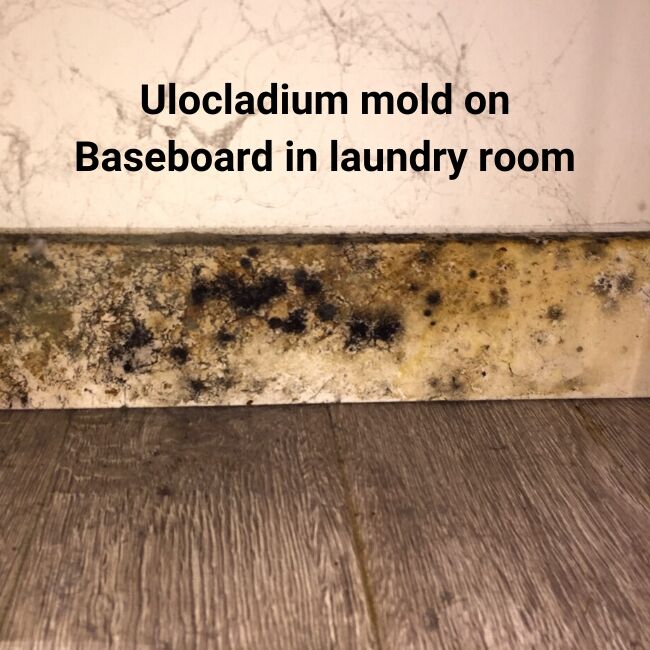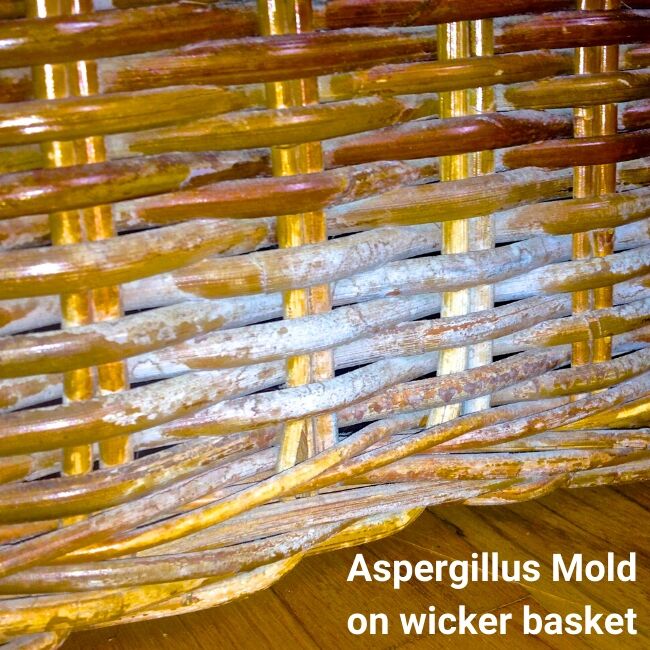Introduction to Types of Mold
This chapter should be treated as a resource for the types of mold that may cause health problems for some people when exposed.
Mold does not affect everyone the same way, but any mold infestation in your home should be taken seriously.
It isn’t always possible to identify mold type 100% without a lab test, but you will have a better chance than most of identifying what type of mold you have in your home and why.
As discussed in earlier, mold needs water, moderate temperatures and organic materials to grow and thrive.
All the mold types found in your home have unique traits that separate them, and some commonalities.
When writing this definitive guide, I knew some education was needed. In this chapter I describe these mold types, while providing authentic examples that I have acquired over the past decade as a mold inspector.
According to my research, I have discovered that there are three main ways mold exposure may affect your health:
Allergenic
Molds that cause allergic reactions to people. They are most problematic to those with asthma and respiratory issues.
Pathogenic
Molds that cause disease in humans and other organisms.
Toxigenic
These molds can be extremely dangerous. They release mycotoxins that may result in serious health issues.
Now let’s break down the 9 most common types of mold!

01 - Alternaria
Alternaria is one of the most commonly found mold types, so it is no surprise that shows up frequently during mold inspections. Alternaria is an outdoor mold. However, the typical locations where you will find it inside include damp areas like bathroom showers, below sinks or wherever water damage occurs. It is dark brown in appearance. This mold is Allergenic as it can cause asthma and other allergies, especially in children or people with compromised respiratory issues. Alternaria grows and spreads quickly, so it is important to have it removed or remediated as soon as possible.

02 - Aspergillus
Aspergillus is another common indoor mold that can be found anywhere in the home, and especially on furniture, or in attics and crawl spaces, where there is water damage or cycles of high humidity and condensation. There are several species of this type of mold so it comes in a variety of different colours. Aspergillus is considered both allergenic and toxigenic as it causes allergies such as asthma attacks in some people and others may experience serious health concerns. If you are looking to test your body for toxic levels of mold in your system, consider contacting Great Plains Laboratory or Realtime Laboratories to learn more. Several clients of mine have used these labs to verify or rule out the impact of mold toxins in their system.

03 - Auerobasidium
Auerobasidium shows up on or behind wallpaper, wood furniture, by windows and on painted walls. This mold typically shows up as white, yellow, light pink and becomes dark brown or black over time. Aureobasidium mold is considered an allergenic mold as sufferers usually complain about cold and or flu-like symptoms, including watery eyes, sneezing, headaches, sinus infections and rashes.

04 - Chaetomium
Chaetomium mold is found in drywall that has been water damaged, by windows, in basements, and under sinks. This mold has a strong musty odour that is hard to miss, and like Aureobasidium, it will eventually turn black, yet starts out white and then turns grey. Again, Chaetomium is another allergenic mold that can cause skin infections, hayfever and asthma type symptoms. For individuals with compromised immune systems it can be especially problematic when it produces mycotoxins (Poisons).

05 - Cladosporium
Cladosporium is often discovered in or under carpets, on curtains, on upholstered furniture, textiles, in cabinets/cabinets and under floorboards. It can also be found around and under sinks and in attics as well. It is dark green or brown. It is fairly robust as it can grow in a wide range of cool to warm temperatures. Cladosporium is considered to be allergenic. People with asthma or respiratory issues should be cautious of this mold.

06 - Penicillium
Penicillium is found on a variety of areas of the home that have been water damaged. They also appear often in attics, insulation and crawl spaces. It will also grow on furniture and in carpeting, dust and plant soil… almost anywhere in the home. Penicillium is typically greenish/blue in appearance, especially when seen on rotting food.

07 - Stachybotrys
Stachybotrys is found in areas that have been saturated from continuous water or excess humidity/condensation for at least 8 days or longer. It is also recognized by it’s strong musty smell. Stachybotrys is a slimy, dark green mold (not actually black) that will grow on cellulose or paper type materials, dry wall, cardboard, hay (wicker furniture) and wood. A whole host of suspected health issues may have been linked to exposure to Stachybotrys, including asthma attacks, breathing issues, fatigue, sinus infections, headaches, nose bleeds, fever, cough, chest pain and a host of other ailments. Young children, people with compromised immune systems and the elderly are most at risk, as they would be with exposure to any such mold.

08 - Trichoderma
Trichoderma is a white and green mold that is typically found outside in plant soils. However, when found inside, it grows in damp, water damaged buildings on wallpaper, carpets, floors, wood furniture and on bathrooms, kitchens and laundry areas, or what I would refer to as “wet areas”. It can also be found in highly humid areas with excess condensation, such as HVAC ducts and air conditioning systems. Trichoderma is an allergenic mold, leading to sinus infections, sneezing and coughing. However, it can also be categorized as a pathogenic type of mold. When left unchecked, Trichoderma can significantly compromise the structural integrity of a building through rot damage.

09 - Ulocladium
Ulocladium thrives in extremely wet environments, such as a flood, and is typically found alongside Stachybotrys and chaetomium. This mold may cause some people to have mild allergies when exposed. The typical areas that Ulocladium is found inside the home include bathrooms, basements, kitchens, or areas of high concentrations, such as windows. Ulocladium mold is a black mold as well as many other types of mold.
Takeaways
Understanding these different mold types and some of their characteristics will give you a few clues, but the only way to know the exact type is to call in a professional to test the mold, and send the samples to a mold lab for analysis.
If you feel like you are experiencing any mold-related health issues, I recommend contacting your doctor or allergist to arrange a Mycotox Profile test from Great Plains Lab or Real Time Laboratories.
Regardless of what types of mold you have in your home, you will always need to figure out the cause of the mold, so you can take steps to prevent it from returning. If the cause or causes of mold are not obvious, then you should call in a mold inspector to help you out.
Any large-scale mold problem requires the work of a professional remediation or restoration contractor.
As a homeowner or renter, your effort should be focused on mold prevention. Taking the time to read and understand this document will be time well spent as it can save you money, while helping you reduce health issues for you and your family.
